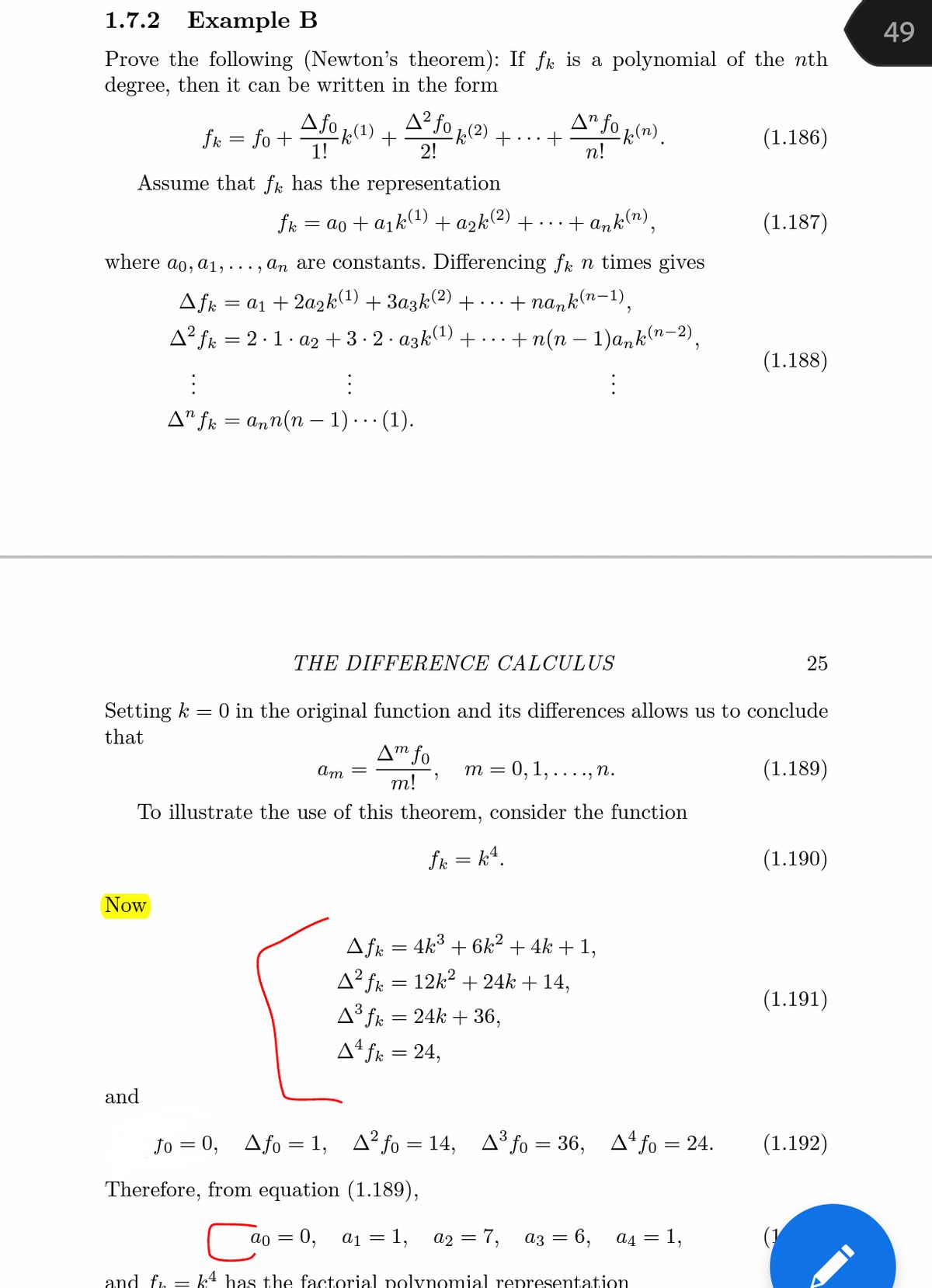Explain this

Extracted text: 1.7.2 Example B 49 Prove the following (Newton's theorem): If fk is a polynomial of the nth degree, then it can be written in the form A fo 1) A² fo 1(2) + ..+ A" fo ln) . fk = fo + (1.186) 2! п! Assume that fk has the representation fk = ao + a1k1) + azk(2) + ... · + ank"), (1.187) where ao, a1, ..., an are constants. Differencing fk n times gives (п-1) Afk = a1 + 2a2k(1) + 3azk(2) +... + nank(n A² fk = 2·1. a2 + 3 - 2· azk(1) +... + n(n - 1)a, k (п -2), (1.188) A" fr = ann(n – 1)..· (1). THE DIFFERENCE CALCULUS 25 Setting k = 0 in the original function and its differences allows us to conclude that A™ fo = 0, 1, ...., n. (1.189) Am = m = т! To illustrate the use of this theorem, consider the function fk = k4. (1.190) Now Afk = 4k° + 6k² + 4k + 1, A² fk = 12k? + 24k + 14, (1.191) A³ fk = 24k + 36, A4 fk = 24, and Jo = 0, Afo 1, A? fo = 14, A³ fo = 36, Afo = 24. (1.192) Therefore, from equation (1.189), 0, a1 = 1, a2 = 7, аз — 6, ад %3D 1, and fr = k4 has the factorial polynomial representation